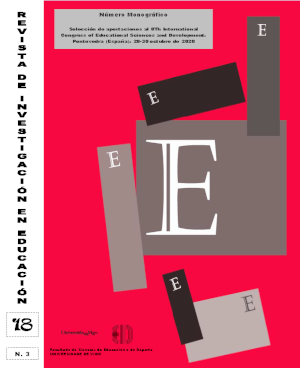Aportación de Teoría de la mente de la Batería NEPSY-II como medida de Coherencia central
DOI:
https://doi.org/10.35869/reined.v18i3.3267Palabras clave:
Coherencia Central, Teoría de la Mente, Trastorno de Aprendizaje Procedimental, Trastorno del Espectro del AutismoResumen
Introducción
El objetivo de esta investigación es analizar la utilidad clínica de “Teoría de la mente” (TM) de la NEPSY-II (Korkman y cols., 2014).
Metodología
Se aplica la TM a 244 escolares de 6 a 11 años con inteligencia normal: 194 del grupo control y 50 de los grupos clínicos: TEA-grado 1 (n=10); trastorno de aprendizaje procedimental (TAP, n=24); y TDAH (n=16).
Resultados y discusión
En los 21 ítems de la TM se realizan análisis factoriales exploratorio (KMO=0,62 y MSA=0,54-0,75) y confirmatorio (?²=22,75 p=0,504; TLI=1,04; CFI=1; RMSEA=0). Se obtienen 3 factores que explican el 62% de la varianza total: Teoría de la mente (ítems 1/2/7); Comprensión relatos sociales (ítems 5/8/10/14); y Coherencia contextual (ítems 9/12/16-21). Se calcula la validez y la fiabilidad y se aportan los estadísticos descriptivos.
En los dos primeros factores no se diferencian ninguno de los grupos (U-mann-Whitney). En Coherencia contextual se diferencian el grupo TAP y los grupos control (p=,001) y TEA (p=,025). Está demostrado que las dificultades para comprender información ra?pida y simulta?nea e integrarla coherentemente forma parte del perfil neuropsicológico del TAP.
Conclusión
Esta nueva corrección e interpretación de la TM evalúa Coherencia central y la aportamos como uso adicional de la prueba.
Descargas
Descargas
Publicado
Número
Sección
Licencia
El copyright de los artículos publicados pertenece a la Facultad de Ciencias de la Educación y del Deporte de la Universidade de Vigo. La aceptación del trabajo para su publicación implica que los derechos de impresión y reproducción serán propiedad de la Revista. La revista permite al autor depositar su artículo en su web o repositorio institucional, sin ánimo de lucro y mencionando la fuente original. Las condiciones de uso y reutilización de contenidos son las establecidas en la licencia Creative Commons CC BY-NC-ND 4.0 (Reconocimiento - No Comercial - Sin Obra Derivada).



